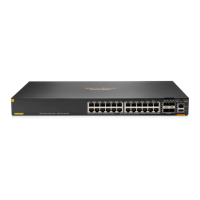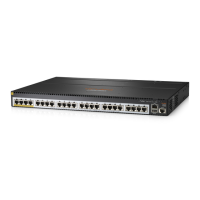19
Logging in to the CLI
By default, you can log in to the CLI through the console port. After you log in, you can configure
other login methods, including Telnet, SSH, and modem dial-in.
To prevent illegal access to the CLI and control user behavior, you can perform the following tasks:
• Configure login authentication.
• Assign user roles.
• Configure command authorization and command accounting.
• Use ACLs to filter unauthorized logins.
This chapter describes how to configure and use CLI login methods, including login authentication,
user roles, and common user line settings. For more information about command authorization,
command accounting, and unauthorized access filtering, see "Controlling user access."
CLI overview
User lines
The device uses user lines (also called user interfaces) to manage CLI sessions and monitor user
behavior. You can configure access control settings, including login authentication and user role, on
user lines. After users are logged in, their actions must be compliant with the settings on the user
lines assigned to them.
Users are assigned different user lines, depending on their login methods, as shown in Table 7.
Table 7
CLI login method and user line matrix
User line Login method
AUX line Console port.
Virtual type terminal (VTY) line Telnet or SSH.
User line assignment
The device automatically assigns user lines to CLI login users, depending on their login methods.
Each user line can be assigned only to one user at a time. If no user line is available, a CLI login
attempt will be rejected.
For a CLI login, the device always picks the lowest numbered user line from the idle user lines
available for the login type. For example, four VTY lines (0 to 3) are configured, of which VTY 0 and
VTY 3 are idle. When a user Telnets to the device, the device assigns VTY 0 to the user, and uses the
settings on VTY 0 to authenticate and manage the user.
User line identification
Every user line has an absolute number and a relative number for identification.
An absolute number uniquely identifies a user line among all user lines. The user lines are numbered
starting from 0 and incrementing by 1 and in the sequence of AUX, and VTY lines. You can use the
display line command without any parameters to view supported user lines and their absolute
numbers.
A relative number uniquely identifies a user line among all user lines that are the same type. The
number format is user line type + number. All the types of user lines are numbered starting from 0
and incrementing by 1. For example, the first VTY line is VTY 0.

